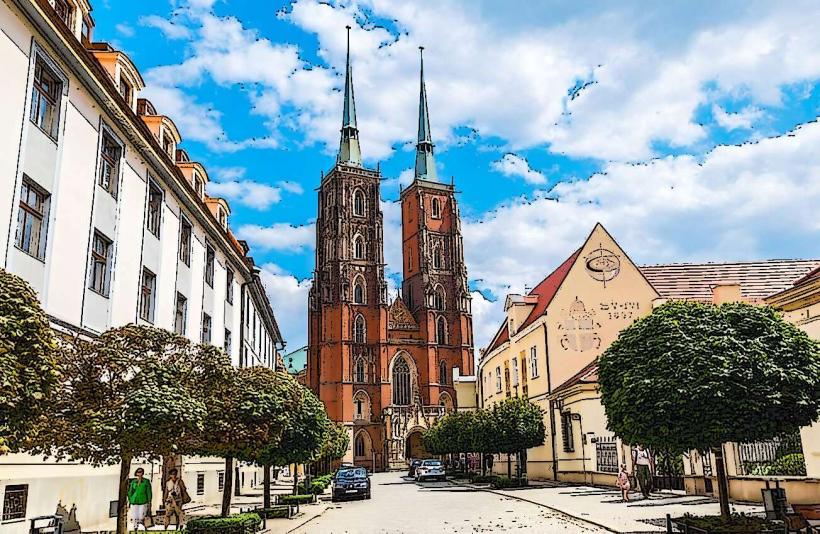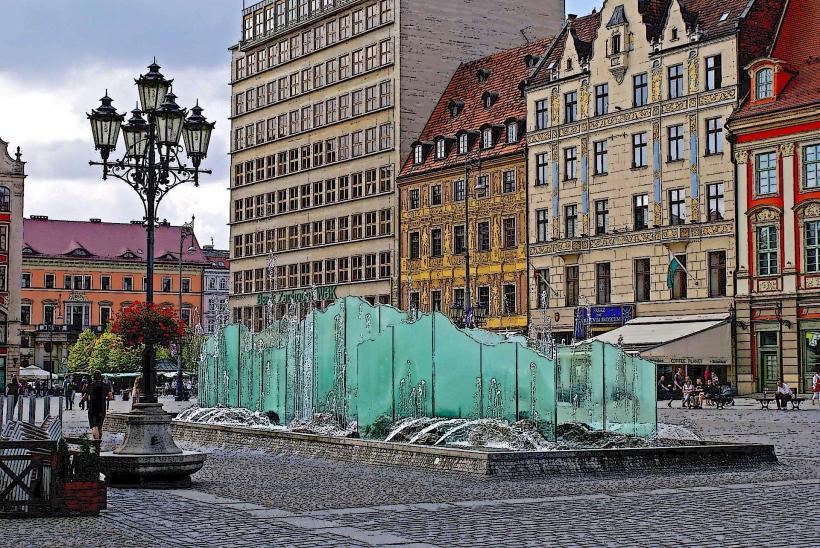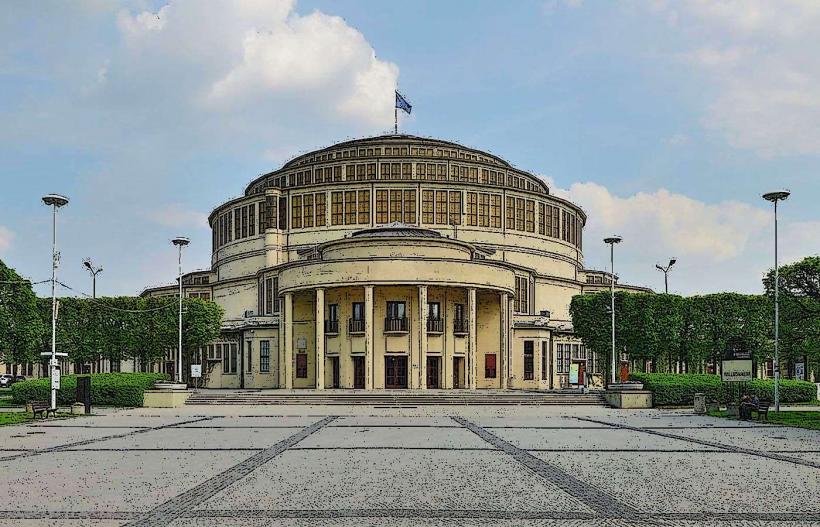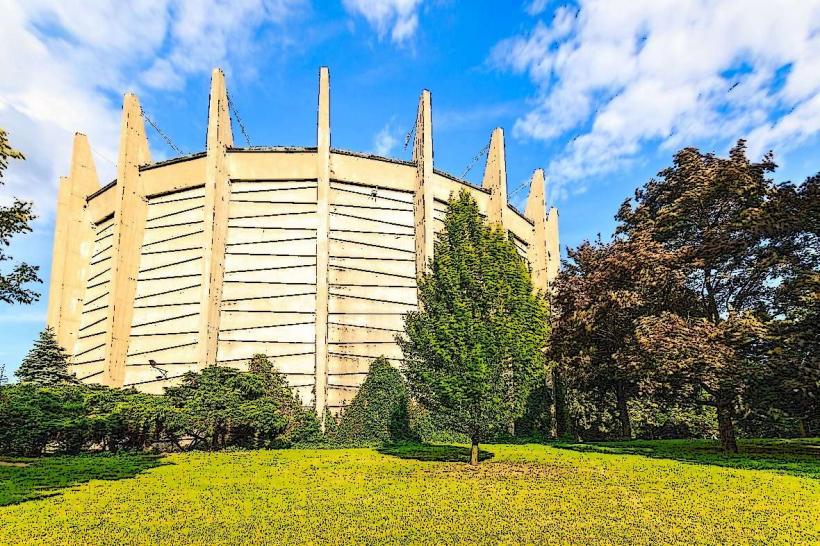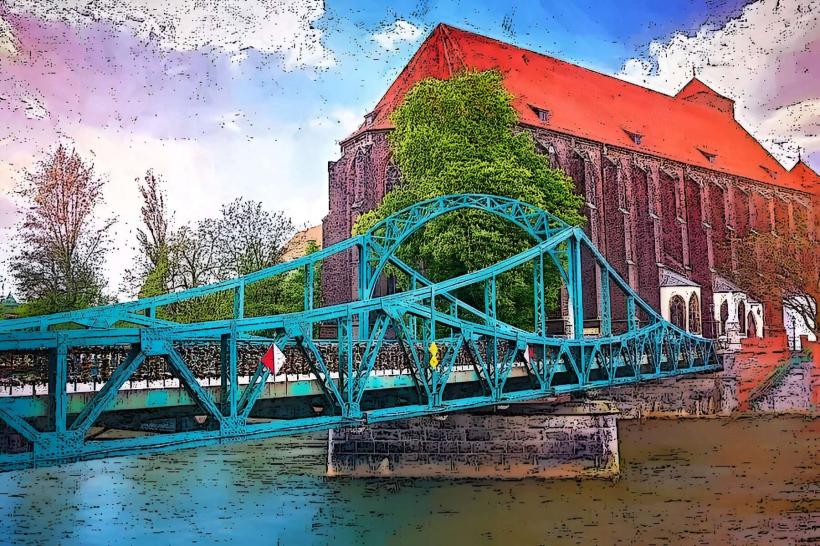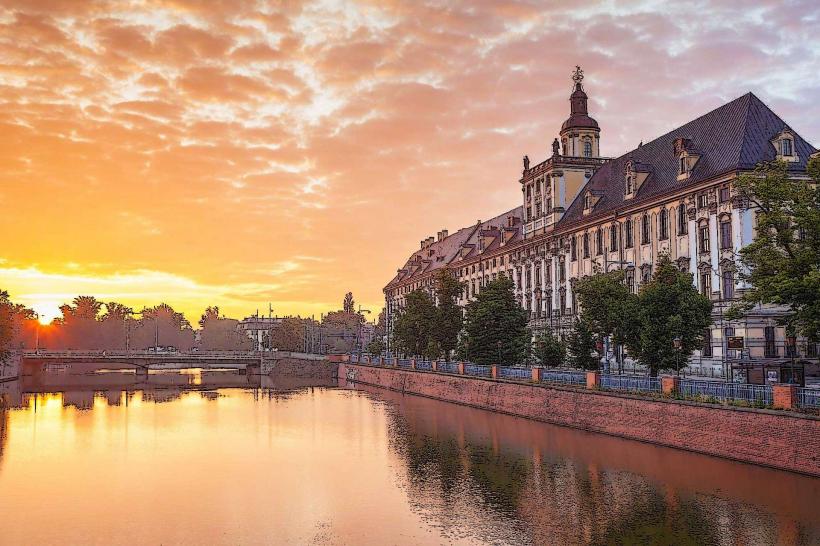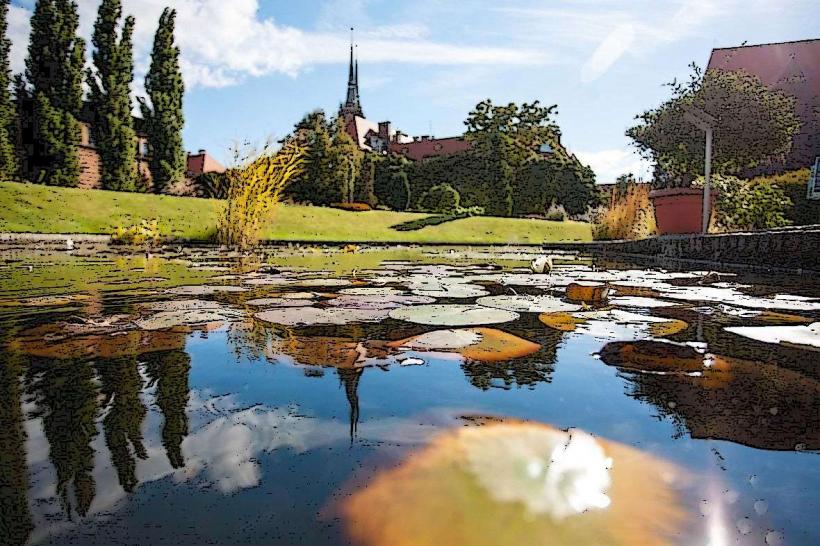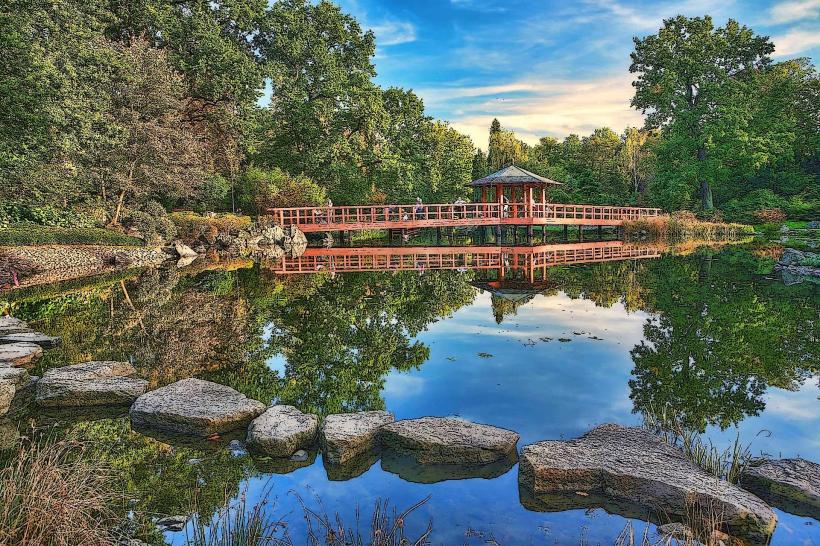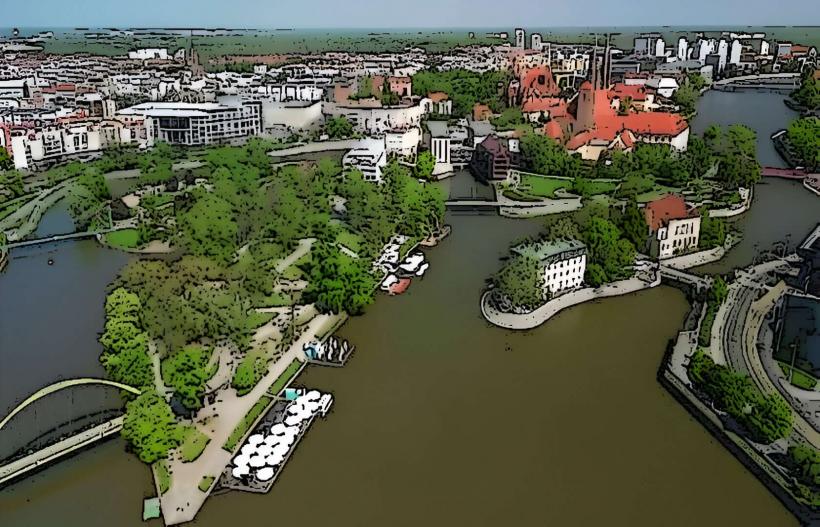Information
Landmark: Odra RiverCity: Wroclaw
Country: Poland
Continent: Europe
The Odra River (Polish: Rzeka Odra) is one of the longest and most important rivers in Poland, as well as a significant waterway in Central Europe. The river flows through Czechia and Poland, and it eventually empties into the Baltic Sea. In Poland, the Odra is particularly important for the cities along its banks, including Wrocław, Szczecin, and Opole, and has historically played a crucial role in transportation, trade, and the development of the region.
Geography and Course
Source: The Odra River originates in the Czech Republic, specifically in the Oderské Vrchy mountain range, located near the border with Poland. From its source, it flows primarily through Czechia, entering Poland at Opole.
Length: The total length of the Odra River is approximately 854 kilometers (531 miles), with about 542 kilometers (337 miles) flowing through Poland. It is the second-longest river in Poland, after the Vistula River.
Flow: The river flows generally northwest, passing through cities such as Opole, Wrocław, and Szczecin, before reaching the Baltic Sea via the Szczecin Lagoon. Along its course, the Odra is connected to several other rivers and water bodies, including the Neisse River, Oder Spree Canal, and the Warta River.
Delta and Mouth: The Odra River's mouth lies near Szczecin, where it forms a delta, flowing into the Szczecin Lagoon before finally reaching the Baltic Sea. This delta region is significant for both natural habitats and human settlements.
Economic Importance
Shipping and Trade: The Odra has been a major route for river trade for centuries. It is navigable for large portions of its length, particularly in the lower reaches, and serves as an important transportation route for goods like coal, timber, and agricultural products. The city of Szczecin is one of the largest seaports on the Baltic Sea and is directly connected to the Odra, making the river vital for both domestic and international trade.
Industry: Cities along the river, such as Wrocław and Szczecin, have historically developed industrial areas taking advantage of the river for transportation and water supply. Today, these cities remain key industrial and commercial hubs in Poland.
Hydroelectric Power: The river also serves as a source of water for various hydroelectric power stations and other energy production facilities, making it a vital resource for Poland's energy infrastructure.
Environmental Significance
Biodiversity: The Odra River supports a diverse range of ecosystems. Its wetlands and floodplains are home to a variety of plant and animal species, many of which are protected. The Odra Delta and Szczecin Lagoon are especially important for migratory birds and other wildlife. The river is part of the Natura 2000 network, which is dedicated to protecting Europe's most valuable natural habitats and species.
Conservation Challenges: Like many rivers, the Odra faces significant environmental challenges, including pollution, over-extraction of water, and habitat degradation. Efforts are ongoing to improve water quality and protect biodiversity along its course. Additionally, changes in land use, agricultural practices, and urban development have impacted the river’s natural systems.
Flooding: The Odra River is prone to flooding, particularly in areas with lower elevations such as Wrocław and Szczecin. Flood control and management are essential to protect human settlements and natural habitats along the river.
Cultural and Historical Importance
Cities on the Odra: The river has been central to the development of many Polish cities. Wrocław, in particular, is often called the “Venice of Poland” due to its location along the Odra and the numerous islands and bridges within the city. The river has shaped the architecture and urban planning of the city, and many historic landmarks are situated along its banks.
Historical Significance: The Odra River has played a role in the region’s history for centuries. It was an important trade route during the medieval period, particularly during the Middle Ages when Wrocław was a major trading center. Over the centuries, the river has been a strategic point in various military conflicts, including during World War II, when it marked part of the front line between German and Soviet forces.
Cultural Heritage: The river is also a part of the region’s cultural heritage, inspiring local artists, writers, and musicians. The Odra Festival, for example, is a celebration of the river’s importance to the region’s cultural identity.
Popular Attractions and Activities
Wrocław: In the city of Wrocław, the Odra River is an iconic feature. The city is home to several islands on the river, including Tumski Island, which is connected by picturesque bridges. The riverbanks are popular for walking, cycling, and boating. Visitors can also enjoy boat tours along the river to get a unique perspective of the city’s historic architecture.
Szczecin: The port city of Szczecin is another hub along the Odra. Here, visitors can explore the Szczecin Lagoon and the river’s delta region, which offers opportunities for birdwatching and exploring nature reserves. The city is also home to several museums, parks, and historic sites related to the river's significance in the area’s development.
Cycling and Boating: The Odra River is a popular destination for outdoor activities, especially in the summer months. Cycling paths along the river provide scenic routes, and the river itself is often used for boating, kayaking, and other water sports. The Odra is also part of a larger network of European waterways that connects to other regions of Europe, making it an attractive option for recreational boaters.
Nature and Ecotourism: The Odra Delta and the surrounding wetlands are excellent locations for ecotourism, where visitors can explore the natural beauty of the area and spot a variety of birds and wildlife. The delta is particularly well-known for its migratory bird populations, making it a popular spot for birdwatching.
Conclusion
The Odra River is a vital natural, cultural, and economic asset to Poland and Central Europe. It has shaped the development of the cities along its course, played a crucial role in regional trade and industry, and remains a key environmental feature with rich biodiversity. Visitors can enjoy its scenic beauty, learn about its history, and engage in a variety of recreational activities. As Poland continues to prioritize conservation and sustainable development along the river, the Odra will undoubtedly remain an essential part of the country's landscape for years to come.

